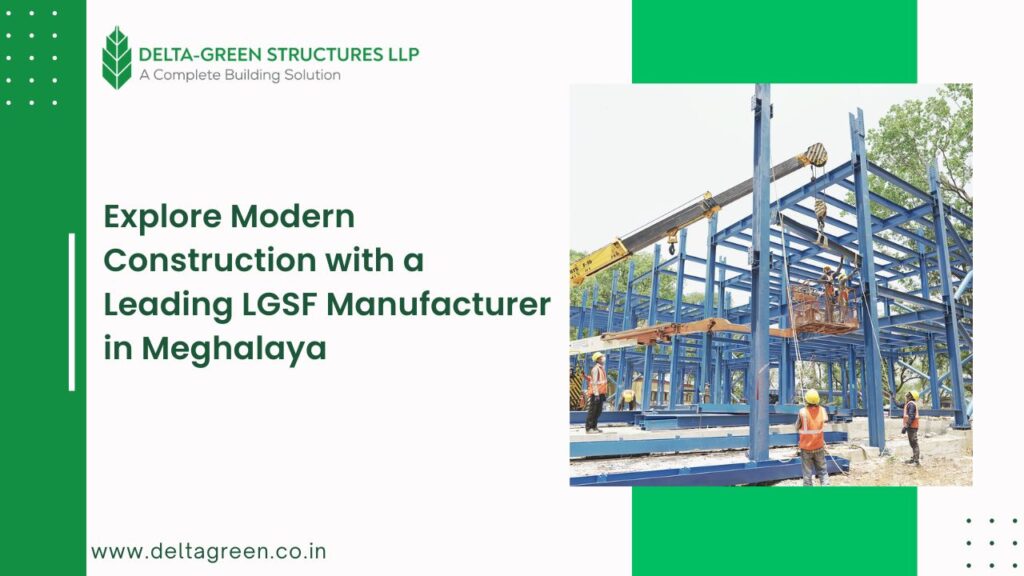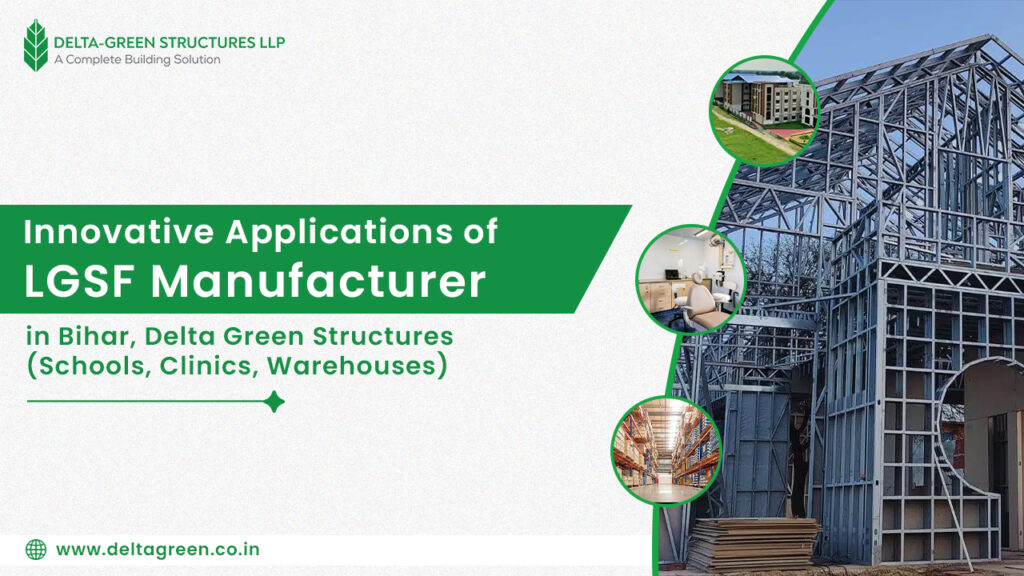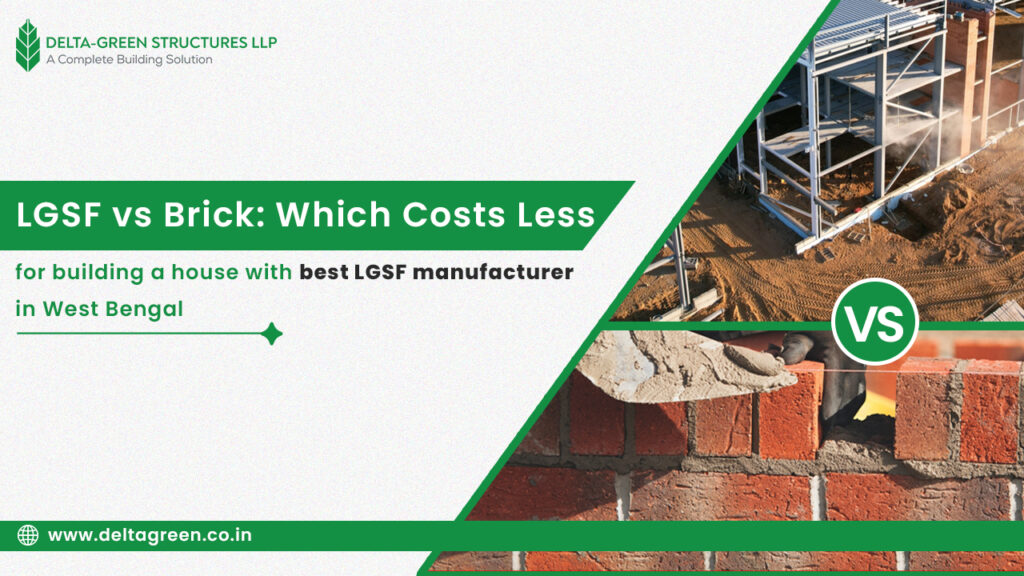Want Safer, Stronger Structures? LGSF Manufacturer in Assam Can Help
For decades, the skyline of Assam has been defined by traditional construction methods.While these methods have served us well, the modern era demands more: more resilienceagainst earthquakes, more speed in construction, more efficiency in energy, and moreresponsibility towards our environment. The question for homeowners, builders, anddevelopers has been, how do we achieve this?The answer is resonating across the construction industry: Light Gauge Steel Frame (LGSF)technology. And if you are looking for expertise in this revolutionary building method,partnering with the right LGSF manufacturer in Assam is the most critical decision you willmake. Understanding the LGSF Revolution: Beyond Bricks and Mortar Light Gauge Steel Frame construction involves using cold-formed steel sections to createthe primary structural framework of a building. These are not the heavy, hot-rolled steel beams used in skyscrapers, but high-strength, lightweight galvanized steel studs and tracksthat are precision-engineered in a controlled factory environment.The components are then transported to your site and assembled with remarkable speedand accuracy. This method is a complete paradigm shift from traditional masonry, offering a plethora of benefits that are perfectly suited to the unique needs and challenges of theAssam region. Why LGSF is the Ideal Choice for Assam's Unique Landscape Assam is a state of breathtaking beauty but also of specific geological and climatic conditions. LGSF technology directly addresses these factors: 1. Unmatched Seismic Resilience Assam falls in a high-risk seismic zone (Zone V). The safety of inhabitants is paramount. Traditional buildings, with their heavy, rigid materials, are vulnerable to seismic forces. LGSF structures, on the other hand, are inherently flexible and lightweight. The steel frame is designed to absorb and dissipate seismic energy, swaying with the forces of an earthquake rather than fracturing. This ductile behaviour makes it one of the safest construction systems for earthquake-prone areas. 2. Speed of Construction: Build in Weeks, Not Months One of the most significant advantages of LGSF is its speed. Since all components are pre- engineered and fabricated off-site, the on-site assembly is like a well-rehearsed orchestration. There is no waiting for bricks to be laid or concrete to cure. A weather-tight shell can be erected in a matter of weeks, drastically reducing the overall project timeline. This means you can move into your new home or open your commercial facility much faster, leading to earlier returns on investment. 3. Superior Strength and Durability Don't let the "light gauge" name fool you. The steel used is galvanized with a protective zinc coating, making it highly resistant to corrosion, termites, and rot—common concerns in Assam's humid climate. Unlike wood, it does not warp, split, or attract pests. The result is a structure that maintains its integrity and strength for decades, with minimal maintenance. 4. Exceptional Thermal and Acoustic Insulation LGSF structures are not just about the steel frame; they are a complete building system. The cavities within the walls are perfect for inserting high-performance insulation materials. This creates a highly effective thermal barrier, keeping the interior cool during Assam's humid summers and warm during the mild winters. This leads to dramatically lower energy bills for air conditioning and heating. Furthermore, the system can be designed to provide excellent acoustic insulation, creating peaceful, quiet interiors. 5. Environmental Sustainability In an age of growing environmental consciousness, LGSF stands out. Steel is the world's most recycled material, and the entire system generates minimal waste compared to traditional construction. The precision engineering ensures that every component is used, with little to no debris ending up in a landfill. Additionally, the energy efficiency of the completed building further reduces its carbon footprint over its long lifespan. Delta Green Structure: Your Trusted LGSF Partner in Assam While the technology is powerful, its success hinges on expert implementation. This is where Delta Green Structure comes in. We are your dedicated partner for LGSF construction services across Assam. We bridge the gap between cutting-edge technology and your vision. Our model is designed for excellence and reliability: Expertise You Can Rely On: Our team comprises seasoned engineers, architects, and technicians who are specialists in LGSF design and project management. We understand the local building codes, soil conditions, and climatic challenges of Assam. Precision from the Ground Up: Our structural components are manufactured to the highest international standards in a state-of-the-art facility. This ensures that every stud, track, and panel that arrives on your site is of impeccable quality and perfect dimension. End-to-End Service: We don't just supply materials; we provide a comprehensive service. From initial design consultation and detailed structural planning to precise on-site assembly and project management, we guide you through every step of the journey. Commitment to Quality: We don’t just supply materials; we provide a comprehensive service. From initial design consultation and detailed structural planning to precise on-site assembly and project management, we guide you through every step of the journey. Building a Safer, Stronger, and Smarter Assam The future of construction in Assam is intelligent, resilient, and sustainable. LGSF technology is at the forefront of this transformation. By choosing to work with a dedicated and experienced LGSF manufacturer in Assam like Delta Green Structure, you are not just building a structure; you are investing in peace of mind, long-term value, and a greenerfuture.Ready to explore how LGSF can bring your project to life with unparalleled safety, speed, and strength?
Want Safer, Stronger Structures? LGSF Manufacturer in Assam Can Help Read More »








